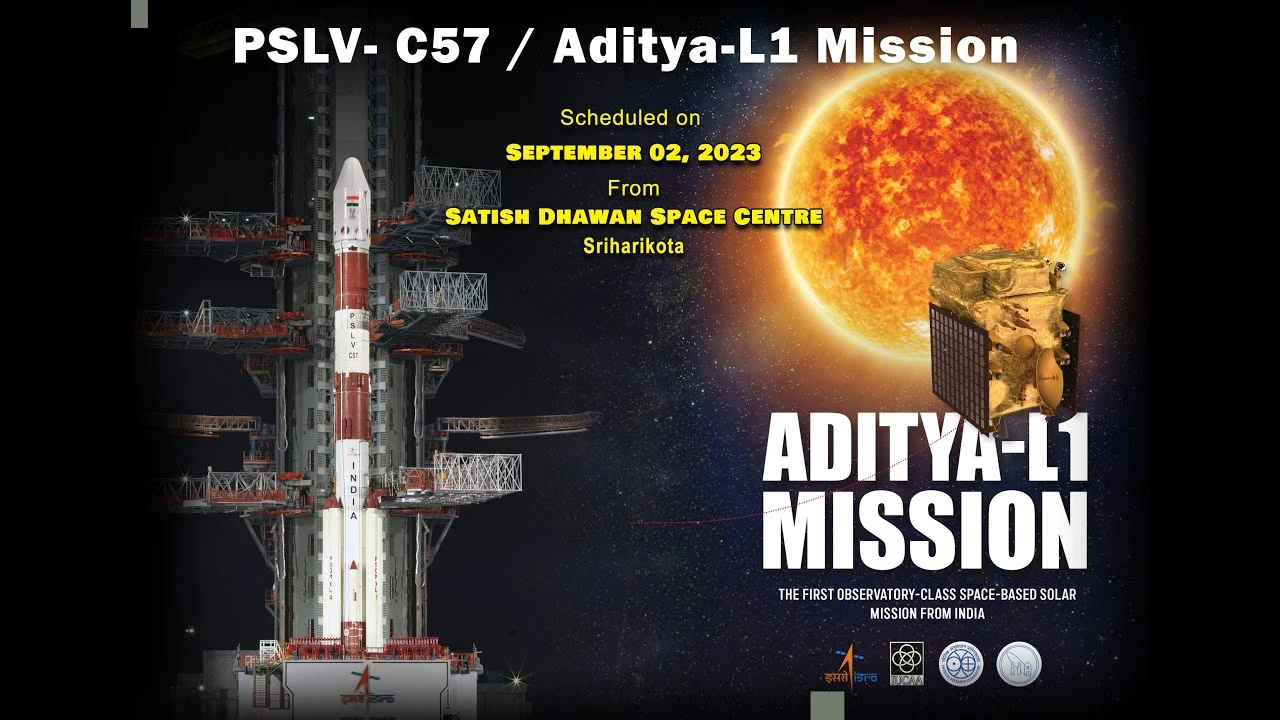Following its historic maiden landing close to the south pole of the Moon just a few days ago, India has just launched its first observation mission to the Sun. On Saturday at 11:50 India time (06:20 GMT), Aditya-L1 was launched by PSLV-C57 from the launch facility in Sriharikota.
“We extend our congratulations to Isro on the successful launch of the Aditya L1 mission. This achievement follows the Chandrayaan-3 mission, marking another significant milestone for India’s space sector. It not only reaffirms India’s capabilities in space exploration but will establish trust in our private sector’s ability to collaborate internationally and contribute to the global space industry. These successes will also further enhance funding prospects for our private space companies,”
Lt. Gen. AK Bhatt (Retd.), Director General, Indian Space Association (ISpA).
The spacecraft will be successfully positioned on its Halo orbit, L1, close to the Sun in four months. The mission’s seven payloads will start operating to begin tackling some of the most intriguing mysteries regarding the Sun.
AdityaL1’s parking spot.
Lagrange point 1, or L1, is the precise location the Indian spacecraft is traveling to between the Sun and Earth. According to the European Space Agency, a Lagrange point is a location where the gravitational pull of two massive objects, such as the Sun and the Earth, cancel each other out and allow a spacecraft to “hover.”

Aditya-L1 will be able to orbit the Sun at the same speed as the Earth once it reaches this “parking spot.” This also means that the satellite will run on very little fuel. According to ISRO, the orbiter is equipped with seven scientific equipment to examine and analyse the solar corona, which is the sun’s outermost layer, the photosphere, which is the part of the sun that we can see from Earth, and the chromosphere, which is a thin layer of plasma between the photosphere and the corona.
Mission’s Brief
Aditya-L1 stays in Earth-bound orbit for 16 days after its scheduled launch on September 2, 2023, during which time it performs 5 maneuvers to achieve the necessary velocity for its voyage. Aditya-L1 then performs a Trans-Lagrangian 1 insertion maneuver, starting its 110-day journey to the location around the L1 Lagrange point. Once reaches the L1 point, another maneuver locks Aditya-L1 into an orbit around L1, which is the point of equilibrium for the Earth’s and Sun’s gravitational fields. The satellite spends the entirety of its mission life in an erratic orbit around L1 in a plane that is roughly perpendicular to the line connecting the Earth and the Sun.
Main objectives.
The mission’s main goal is to improve India’s capacity to observe the Sun continuously. The Sun may be observed without obstruction, which will make it easier to closely monitor its behavior. Aditya L1 has two significant instruments and five minor ones for its accomplishment.
Major instruments attached
An ultraviolet imager that continuously records photos of the Sun is called SUIT (Ultraviolet Imaging Telescope). The UV spectrum is crucial for observational purposes. The Sun’s corona emits a significant amount of ultraviolet and X-ray energy, which is why it is significant. VELC is another important tool. The outermost part of the Sun’s atmosphere, known as the corona, is the subject of this spectrograph’s primary attention. Notably, it goes well beyond the apparent disc of the Sun. The ISRO scientists will be able to correlate changes in the Sun’s corona with activities on the surface thanks to VELC, which will monitor the corona in addition to SUIT.
The photosphere, the region of the Sun that is visible from Earth, the solar corona, and the chromosphere—a thin layer of plasma sandwiched between the photosphere and the corona—will all be observed and studied by these sensors. The research will aid in the understanding of solar activity, including solar wind and solar flares, and their immediate impact on Earth and near-space weather.
According to Mylswamy Annadurai, a former scientist of Isro, the Sun constantly affects Earth’s weather through radiation, heat, the movement of particles, and magnetic fields. He claims that it also affects the space weather at the same time. If Aditya-L1 is successful, India will join Japan, America, and Europe in the exclusive club of nations already studying the Sun.

Leave a Reply
You must be logged in to post a comment.